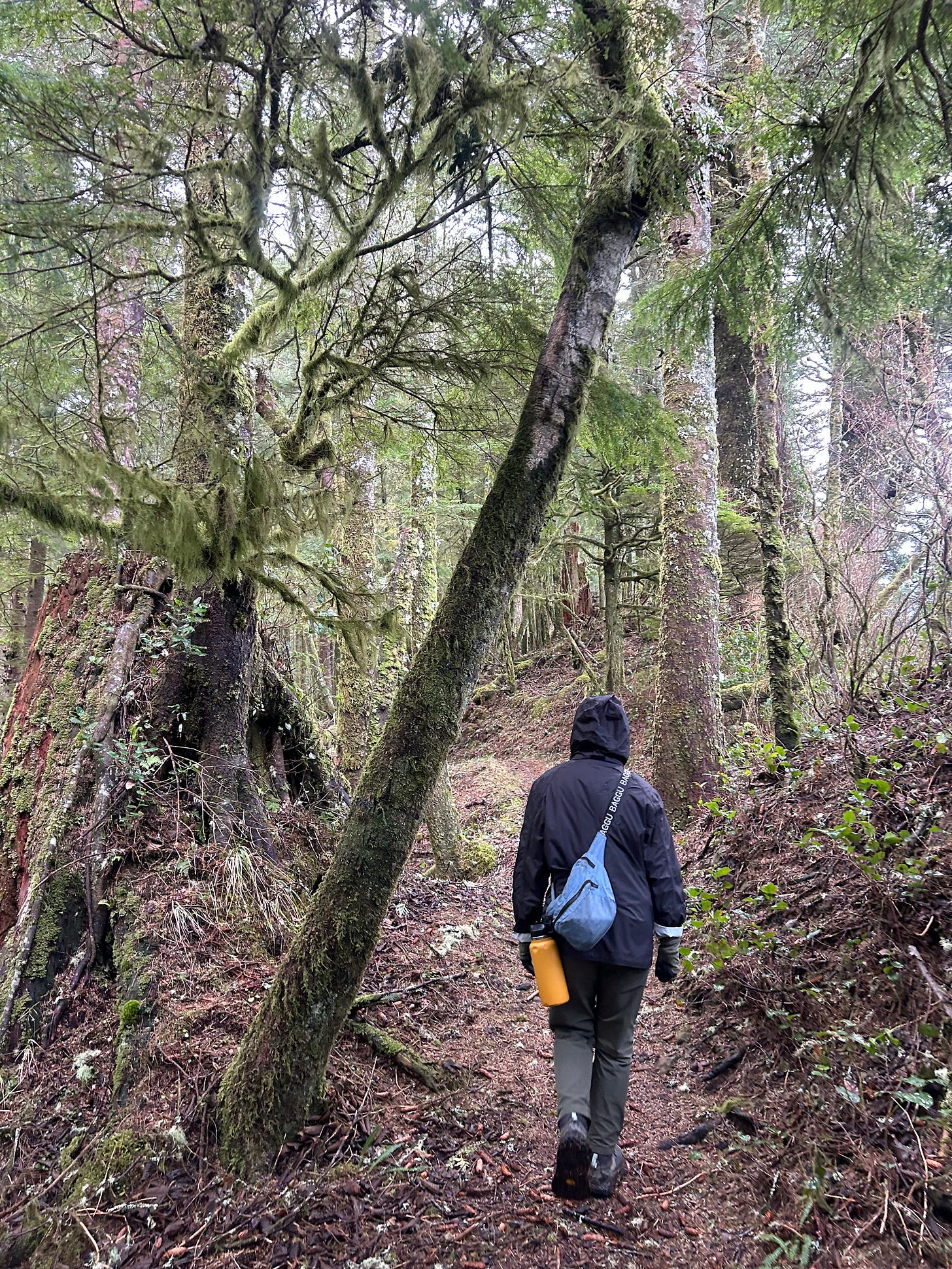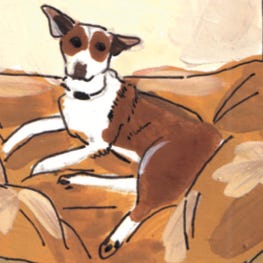Temperature check: what this project is about
Some context for this newsletter + an update on what to expect
Dear reader (or listener),
Thank you for joining me in this space over the past six weeks. I am writing to you from my Los Angeles apartment, where sunlight is bathing the indoor plants that survived the smoke and my weeks away from home. As a friend who lost their home in Altadena put it to me yesterday, it’s so beautiful outside, it’s easy for people to forget anything happened. Or, that it’s continuing to happen…
I know you haven’t forgotten, because you’re reading (and hopefully subscribed!) to this newsletter—a space dedicated to sharing health resources and stories for a world hanging by a thread. I’m currently devoting most of my time here to covering the 2025 Los Angeles fires, and their aftermath. That being said, I’ve long been interested in the intersections between climate change, health and chronic illness, and plan to continue diving into this connection both as it relates to the public health crisis taking place in LA, and beyond.
I thought it was about time I transitioned this project from the crisis response it began as, took a moment to fully introduce myself and my goals here, and told you what to expect from me in the months to come.
The lens through which I work
A little about me, and how I came to this work: I’m a queer and non-binary science journalist, writer and editor who is fascinated by health (and our ideas of it). In March 2020, I was hospitalized for Covid-19 in New York City (where I was living), and never fully recovered. The following month, I wrote what seems to be the first mainstream media story on the chronic illness we now call Long COVID, and started a global support group for “long-haulers.” I’ve written a lot about Long COVID and related conditions—both because these are topics that impact me personally, and because I believe they illustrate larger issues that impact us all: the importance of peer health solutions, the fallacy of a “return to normal,” and the connection between pandemic preparedness and disability justice—to name a few.
When we think of climate catastrophe, we often think of extinction events. But, what happens when climate change alters, yet doesn’t extinguish our existence?
As Mike Davis wrote in THE ECOLOGY OF FEAR, “Megacities like Los Angeles will never simply collapse and disappear. Rather, they will stagger on with higher body counts and greater distress, through a chain of more frequent and destructive encounters with disasters of all sorts.”
It can be difficult to consider a reality other than continuing to live in the world as we know it, or dying out. But, this liminal space is what we’re more likely to experience. It’s an uncomfortable middle ground—like never recovering from a virus, or discovering the “fourth trimester” of pregnancy. How do we learn to exist in it? How do we, as my friend Pato Hebert asks in our recent conversation, learn to embrace “our land and water as disabled?”

As writer Leah Lakshmi Piepzna-Samarasinha so poignantly notes in The Future is Disabled, disabled people will soon be a global majority. Climate change is one factor in this development. Climate disasters disable people both immediately, and in their aftermath. Climate change is also a key driver of infectious diseases, which—as I have learned firsthand—often leave us with post-infectious souvenirs. At the same time, climate change is impacting disabled and chronically ill people most significantly. We are often the first to die during disasters due to a lack of accessible evacuation options, and we are more likely to be unable to survive polluted air and rising temperatures.
If all of this is making you feel like shit, I’m sorry. I often find it bewildering and infuriating to live in a world that feels like it’s hanging by a thread. At the same time, I am nourished by the ways communities come together to fill gaps where governments and health systems fail.
I’ve found my own way through this thorny landscape (so far), by resisting denialism and embracing disability justice as a key framework for navigating climate change.
That is the lens that I bring to this newsletter, even when I may not state it explicitly. I believe we all deserve to make informed and resourced decisions about our health, so I’m using this space to try to pin that info, and highlight the communities advocating for and creating better resources.
Some logistics: what to expect here
When I started this newsletter, I was evacuating LA and trying to re-stabilize my health, and recognized that I was engaging in familiar trauma response. When things get gnarly (especially if there’s a health element), family and friends often reach out with questions. In response to everyone’s (and my own) anxiety, I research and aggregate information. In the absence of ample spoons to reply to each person individually, I try to create spaces where we can engage collectively. These strategies help me feel some semblance of control during times of chaos. They offer me a way to stay informed, stay engaged, and stay accountable to my communities.
And, like the fire sign I am, my passion for these projects often burns a little too hot. I move a little too quickly, and forget about the other aspects of my life—reading, unstructured time with friends, long slow runs (when my health is stable). I can bust out a crisis response, but I am still learning how to make these projects and spaces sustainable. Here is my new attempt (in logistics):
Content schedule
Instead of publishing multiple times per week, or even every week, I will be taking more time to create the articles and audio pieces that make up safety pin, publishing approximately twice per month. Each month, you will receive a written article, and an accompanying audio piece—in which
and I will share more of the poignant conversations that have informed the written work on this site. In some instances, our audio pieces may be broken up into two parts, released a few days apart.TLDR; you’ll be getting emails from me less often, but the content will be richer, more varied, and—often—a bit longer than some of the very short pieces on here have been.
Paid vs. unpaid subscriptions
Thus far I have not paywalled any of the content here. I don’t plan to start doing that now. However, paid subscriptions are much appreciated. I spent most of my career freelancing as a writer, journalist and editor. While I now have a salaried job, I believe strongly in paying writers for their work, and am all too aware that those of us who work in the editorial world have chosen an industry that is increasingly hard to survive off of. This is all to say, payment for this work is much appreciated.
Thus far, I’ve used the funds from paid subscriptions to compensate sometimes-writer and podcast producer,
for their excellent work, and upgrade my Zoom account—as it’s the video interview platform with the best accessibility features. More funds will continue to go toward operational costs like the transcription platform I use. Eventually, I’d like to be able to compensate myself at a fair wage for this work, and pay more trans, queer, and/or disabled writers and creatives to join this project. Speaking of collaborators, the wonderful , who penned our piece on how to talk to your boss about environmental hazards, has started their own newsletter on this site. I highly encourage you to check it out and become a paid subscriber.Now that we are publishing less frequently, I’ve lowered the subscription tiers to try to make things more accessible. That being said, I know $5 per month or $55 per year is still a lot for many of you. I really, really wish this app allowed more tiers of paid subscription, so I could offer more options. In lieu of that, I’m sharing my personal venmo (@ fionalowenstein) in case you’d like to make a yearly or monthly donation of an amount of your choice, which I will track in my budget as a subscription.
If you’d like to offer more than the recommended monthly or yearly price, you can become a founding member. Right now, paid subscribers and founding members don’t get any special perks—other than knowing you’re supporting our work by helping us do it. But, once we settle into the flow of this new publishing rhythm, we’ll see what’s possible. There could be some cute merch in your future.
Going forward, you’ll see a little plug at the top of these newsletters asking you to consider becoming a paid subscriber, and to engage with this project by “hearting” the articles. I, like many, feel kind of psychologically itchy making these asks, but they’re best practices for sustainability—and I’m trying to become more practiced at that.
Thank you for reading, listening, subscribing, and caring about and for this project. It remains my way of trying to understand the chaos around me—an attempt to stay informed, engaged, and accountable to the communities I love, as our world dangles by a thread.
Stay safe.
Fi


